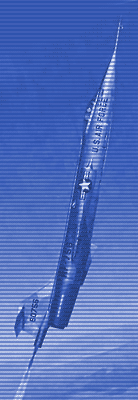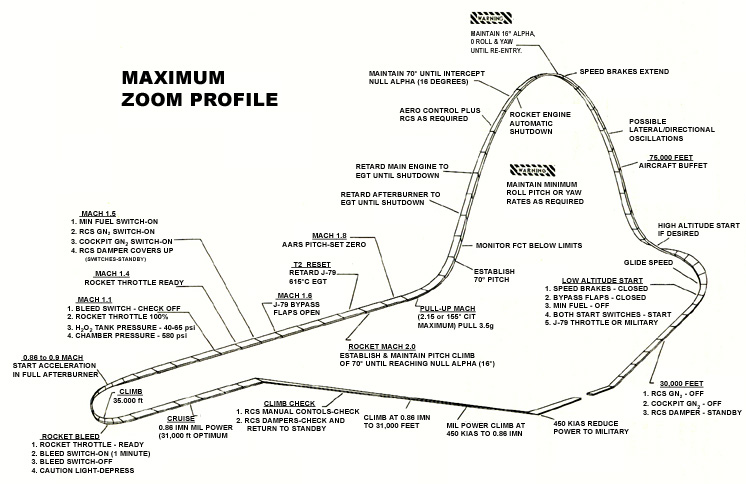AST Configuration >
The
Aircraft >
home

|
|
|
|
|
|
 |
AST Configuration click on the links below for more of the
manual...
|
||||||||||||||||||||
Flight Profile - Max ZoomTrim was not changed from the beginning of the pull up until completion of the zoom and reentry to aeronautic controls, for stability and safety considerations, especially to aid in preventing excess angle of attack at reentry, after the zoom peak. This lack of retrim did allow the AST to attempt nose down in the climb, but the pilot had to manually overcome that with back stick or would fail to achieve the mission. The pilot’s primary task was the critical attitude control throughout the zoom. Flight Characteristics: (PFM Section VI) The Chart, including maximum zoom limits was based on the mathematical analyses done by Lockheed Aircraft prior to any testing of the AST:
The following table is based on presumptions
from the reported but not recorded maximum zooms
and gives the conditions at roughly Mach 1 at
altitudes, representative of the AST peak
altitude, assuming supersonic, which was
generally the case, however it was possible to
get to lower q with lower Mach, making the RCS
even more effective. The standard airspeed gage
did not go below 60 knots and was inaccurate at
that level. Airspeed was not important to the
pilot in the zoom and Mach was, only for pull
up, but I checked the readings over the top on
one occasion and noted about Mach 1 and below 60
knots, thus the inclusion of the following
chart, for interest only.
|
| previous section | next section |
